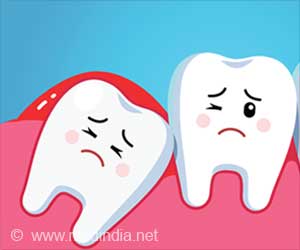Researchers at the University at Buffalo have been able to identify two key components in saliva that could be used to predict the amount of oral bone loss in future.
Researchers at the University at Buffalo have been able to identify two key components in saliva that could be used to predict the amount of oral bone loss in future. Oral bone loss is detrimental for teeth since the bone around a tooth is vital to hold it in place.
Researchers compared the dental x-rays of more than a 100 patients and related them with the levels of salivary proteins. It was found that IL-1-beta levels were higher in patients with considerable bone loss. Another protein osteonectin was found to have an inverse relation to bone loss. "These results show that above-average levels of IL-1 beta in saliva may prove to help the dentist decide whether or not to treat the dental patient for periodontal disease," said lead researcher Frank Scannapieco, D.D.S., Ph.D., professor and chair of the Department of Oral Biology in the UB dental school. The results of the research were presented at the annual meeting of the International Association of Dental Research. "We can measure gum pocket depth, or the amount of bone remaining on an X-ray, but these methods only tell us how much damage already has been done. This biomarker test also could provide a quick and easy way to monitor patients over the long-term and to determine if a particular treatment is working," Scannapieco said.Patricia Yen Bee Ng, Maureen Donley, D.D.S., Ernest Hausmann, D.M.D., Ph.D., Alan Hutson, Ph.D., Jean Wactowski-Wende, Ph.D., and Paul Bronson. Edward Rossomando, Ph.D., from the University of Connecticut were the other reserachers that contributed to the study. National Institute of Dental and Craniofacial Research supported the study.







